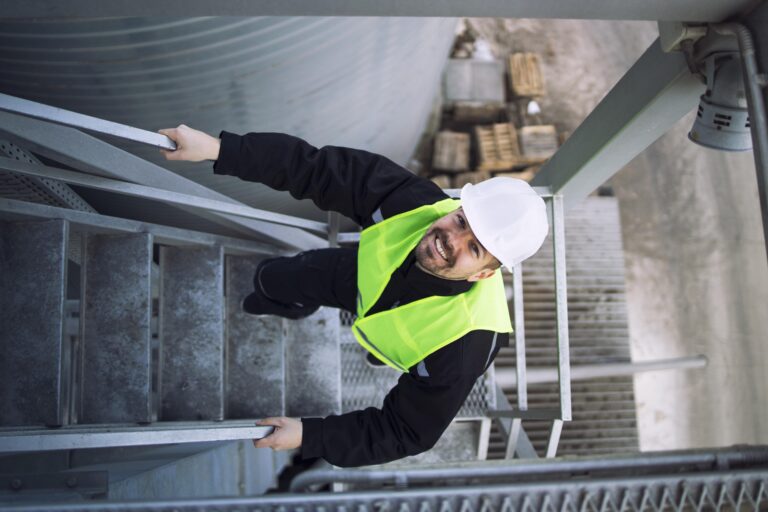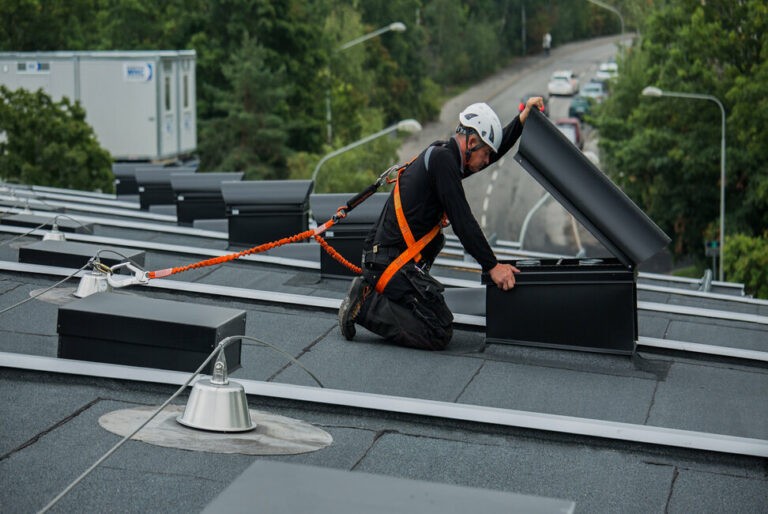Falls are a leading cause of workplace injuries, but with the right safety measures, they are preventable. The Occupational Safety and Health Administration (OSHA) sets strict OSHA fall protection requirements to ensure employers protect workers at heights. At US Fall Protection, we specialize in designing and installing systems that meet these standards, including guardrail systems and lifeline systems. In this blog post, we’ll explore how OSHA requirements influence the design and implementation of these systems and how US Fall Protection delivers tailored solutions for the industries we serve.
Understanding OSHA Fall Protection Requirements
OSHA’s fall protection standards are designed to minimize fall risks in workplaces where employees work at heights. These standards, outlined in 29 CFR 1910 and 29 CFR 1926, require employers to:
- Identify and assess fall hazards.
- Implement fall protection systems, such as guardrails, safety nets, or personal fall arrest systems.
- Provide training on the use of fall protection equipment.
- Conduct regular inspections and maintenance of fall protection systems.
Non-compliance can result in severe penalties, including fines of up to $14,000 per violation, as well as legal and reputational risks. At US Fall Protection, we help businesses navigate these requirements with expert consulting, design, and installation services.
Guardrail Systems: A Passive Solution Shaped by OSHA
Guardrail systems are a passive fall protection solution, meaning they require no action from workers to be effective. OSHA standards, such as 29 CFR 1926.502, specify the design and performance criteria for guardrails, including:
- Height: Top rails must be 42 inches (±3 inches) above the working surface.
- Strength: Guardrails must withstand a force of at least 200 pounds applied in any direction.
- Midrails and Toeboards: Midrails must be installed halfway between the top rail and the working surface, and toeboards must be at least 3.5 inches high to prevent objects from falling.
These requirements ensure guardrails provide a reliable barrier against falls, making them ideal for rooftops, platforms, and other elevated surfaces. At US Fall Protection, our guardrail systems are custom-designed to meet OSHA standards while accommodating the unique needs of your workplace. Whether you’re in construction, utilities, or telecommunications, our solutions are tailored to the industries we serve.
Lifeline Systems: An Active Solution Guided by OSHA
Unlike guardrails, lifeline systems are an active fall protection solution, requiring workers to use personal protective equipment (PPE) such as harnesses and lanyards. OSHA standards, including 29 CFR 1926.502(d), outline the requirements for lifeline systems, such as:
- Anchor Points: Anchor points must be capable of supporting at least 5,000 pounds per worker.
- Lanyards and Harnesses: These must be inspected before each use and meet specific strength and durability criteria.
- Training: Workers must be trained on the proper use of lifeline systems and PPE.
Lifeline systems are ideal for environments where guardrails are impractical, such as sloped roofs or areas with frequent movement. At US Fall Protection, we offer both vertical and horizontal lifeline systems, designed to provide maximum safety and flexibility. Our design and installation team ensures your lifeline systems meet OSHA standards and are tailored to your specific needs.
Comparing Guardrail Systems and Lifeline Systems
Both guardrail and lifeline systems are essential components of a comprehensive fall protection strategy, but they serve different purposes:
- Guardrail Systems: Best for passive protection, requiring no worker action. Ideal for fixed locations like rooftops and platforms.
- Lifeline Systems: Best for active protection, offering flexibility in dynamic work environments. Ideal for workers who need mobility, such as roofers or maintenance crews.
At US Fall Protection, we assess your workplace to determine the best combination of guardrail and lifeline systems, ensuring compliance and safety. Ready to learn more? Get a free quote today.
How US Fall Protection Ensures Compliance
Meeting OSHA fall protection requirements requires expertise, experience, and a commitment to quality. At US Fall Protection, we offer end-to-end solutions, including:
- Consulting: We conduct thorough risk assessments to identify fall hazards and recommend the best solutions.
- Design and Installation: Our in-house experts design and install OSHA-compliant guardrail systems and lifeline systems.
- Annual Maintenance: We provide fall protection annual maintenance to ensure your systems remain effective and compliant.
Our solutions are trusted by industries ranging from construction to telecommunications, as highlighted in the industries we serve. Explore more safety insights in our blog.
OSHA fall protection requirements are the foundation of workplace safety, shaping the design and implementation of guardrail systems and lifeline systems. By partnering with US Fall Protection, you can ensure your workplace is safe, compliant, and efficient. Contact us today to get a free quote and take the first step toward comprehensive fall protection.



